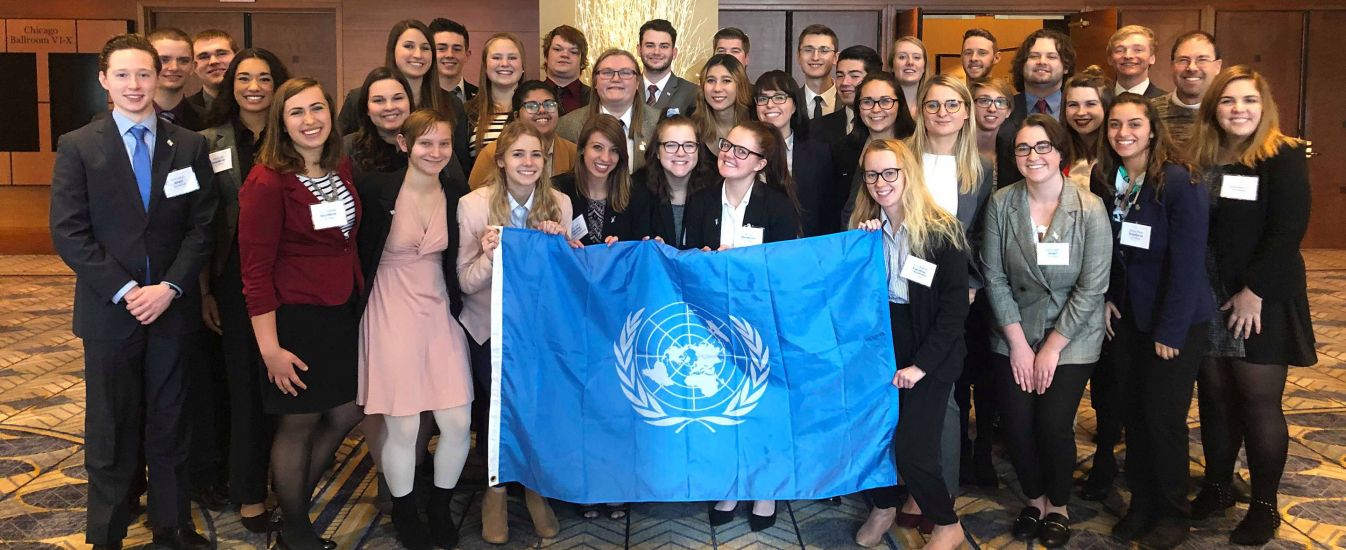General Assembly, UNHRC, & UNHCR
This conference tries to provide delegates with an opportunity to practice parliamentary procedure. However, it is not our intention to be so strict about procedure that it gets in the way of a good educational simulation. Included below is the procedural order we will be following at the conference.
Procedures
I. The General Assembly, UNHRC, UN Women shall each be presided over by a Chair who will declare the opening and closing of each meeting, direct the discussion of the meetings, ensure the observance of these rules, accord the right to speak, put questions, and announce decisions.
II. First the Chair will conduct roll call. All delegates should raise their placards when their country’s name is called.
III. The committee’s first order of business will be to set the agenda.
- Motion to put topic X on agenda (second required, debatable)
- Debate (2 speakers in favor, 2 opposed)
- Motion to close debate (procedural vote)
- Vote on original motion (procedural vote)
III. The committee will then move to consideration of topic X
- The committee shall move to open a speaker’s list or caucus, for the purpose of debate
- Delegates shall raise their placards to be acknowledged
- A motion for a speaker’s list requires a second, is debatable, and requires a simple majority vote
◦ Upon adoption of a speakers list, a time limit can (and should) be set for speeches. A motion to limit the speaker’s time requires a second and is debatable.
- A motion to caucus must be seconded and requires a simple majority vote. A time limit must be set for caucusing.
◦Caucusing can be either moderated or unmoderated.
-
Unmoderated caucusing will involve members meeting in groups to discuss, while moderated caucusing will be presided over by the Chair.
- During moderated caucusing, members will raise their placards to be recognized and may then speak for the designated amount of time.
- Delegates are expected to remain on topic when speaking to the floor. If the Chair determines the speaker has gone off topic they will call Dilatory and the speaker must return to the Topic under discussion.
IV. Passage of resolutions
- Draft resolutions shall be introduced to the dais. The dais will review the draft and may request changes. After all changes have been made and the resolution has been approved the dais shall provide for their distribution to all members of the committee.
- To be introduced to the dais a draft resolution must have the signatures of at least 25% of the committee.
- When the draft resolution has been distributed, the floor is opened for debate. One of the signatories may rise to introduce the draft resolution. The adoption of draft resolutions is a substantive question.
V. Caucus to Combine Resolutions
- Resolutions may be combined, however they require a Vote by Consensus. A Vote by Consensus requires unanimous “yes” or “abstain” from all voting members in order to pass.
VI. Motion to Vote (Call the Question)
- Once a resolutions has been brought to the floor, Call the Question may be motioned. A Call the Question requires a second and is debatable. It requires a simply majority vote to pass. Once a Call the Question has passed, the committee will immediately enter into Voting Procedure.
VII. Voting
- All votes require a simple majority.
- Roll-Call Vote: The committee shall normally vote by a show of placards, but any delegate may request a roll call vote. The roll call vote shall be taken in the English alphabetical order of the names of the members. The name of each member shall be called. Votes shall be “yes,” “no,” or “abstain”. Requests for a roll call vote are not subject to vote, debate, or objection.
We strongly encourage delegates to speak on behalf of their country in front of the entire simulation session.

